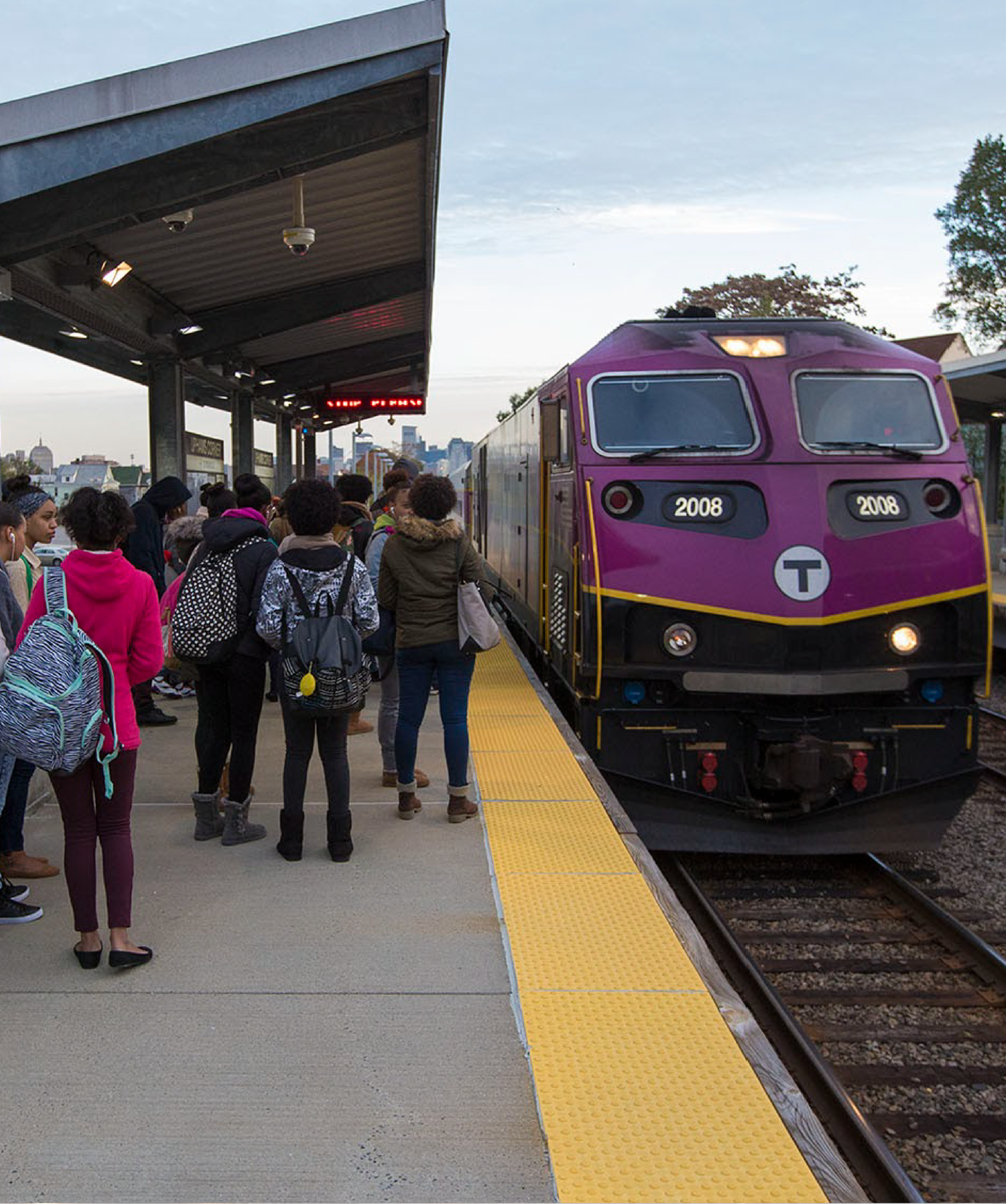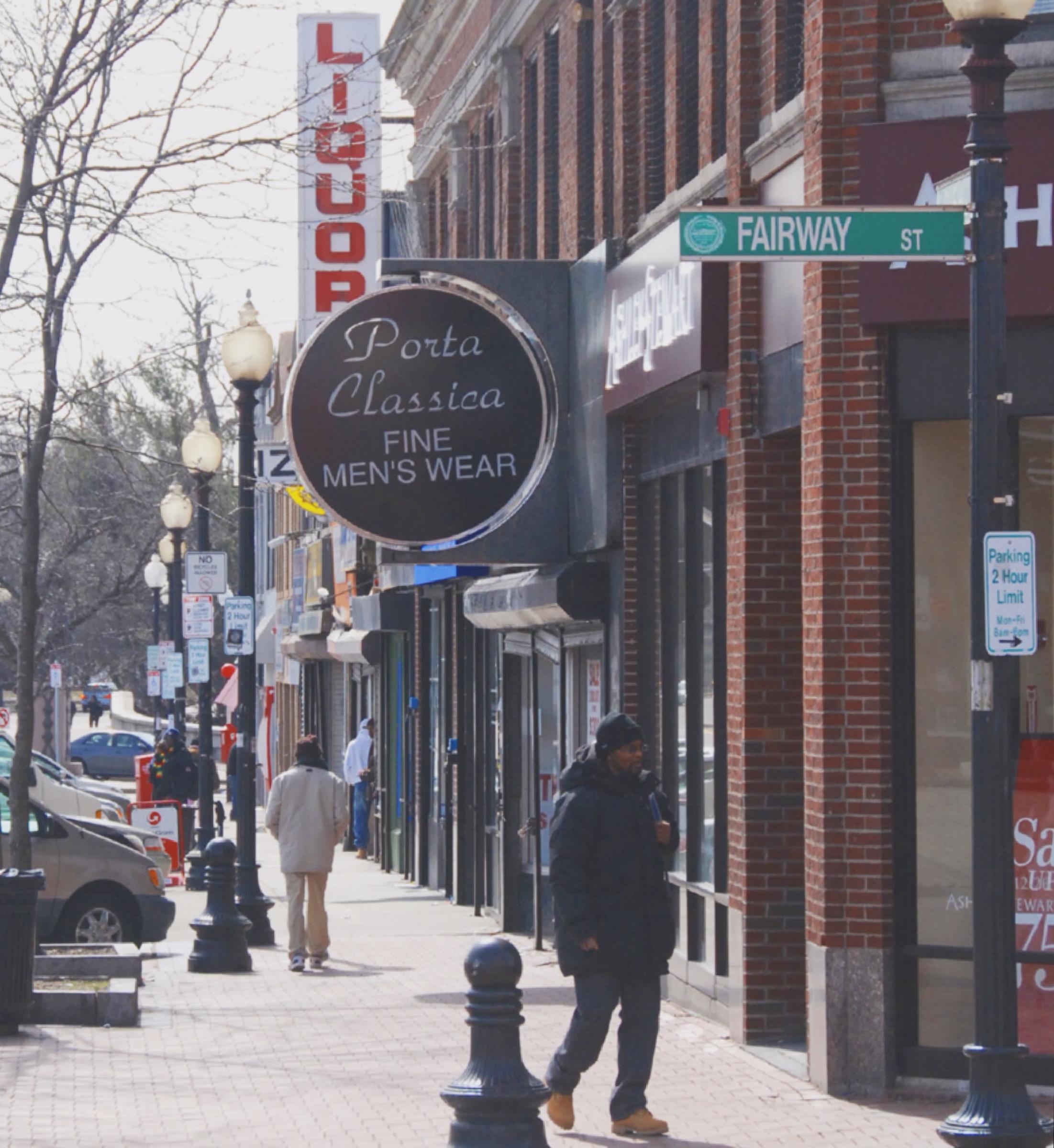Fairmount Line Service Enhancement
New Fairmount Line Service is here. Check the Fairmount Line Weekday Service Pilot for regular updates.
Service Enhancement Summary
In January, the Fiscal and Management Control Board approved the City of Boston’s Fairmount Line Service Enhancement Proposal. This enhancement will result in the following:
There are 40 existing trips that run each weekday along the line. This project would add eight more trips, creating a 20-percent increase in service.
Service Starting Earlier And Ending Later
We want to support early workers and nightlife activity. The service will now start an hour earlier and run an hour later. Scheduling can be found in the Fairmount Line Service Enhancement Summary.
New Ways To Pay Your Fare
The MBTA is adding fare reader machines on every platform. Riders will be able to use: CharlieCards and CharlieTickets, Senior Passes and Youth Passes, and Stored Value Cards to pay for rides.
Project Context
Fairmount Line Service Improvements were called for in the City of Boston’s Go Boston 2030. They were also called for in the Boston Planning and Development Agency’s Fairmount Indigo Planning Initiative.
These improvements can make a significant improvement in transit access to communities of color who have historically been underserved. But, the current infrequency of trains and the issues with payment make it hard for residents to rely on this service. This is particularly true if they need to use a combination of buses and trains.
The Fairmount Indigo Transit Coalition and the Fairmount Indigo CDC Collaborative have also brought awareness to transit equity along the Fairmount Line.
Project Motivations
Current Service
- The Fairmount Line operates with the worst frequencies in the entire Commuter Rail System.
Equity
- The Fairmount Line is the only rail service in the entire MBTA network with a majority-minority ridership.
- Beyond minority status, the Fairmount Line also hosts high concentrations of residents who are socially vulnerable. This includes high rates of unemployment
- Commuters living along the Fairmount Line experience disproportionately long travel times.
Population Density
- Density in the quarter-mile surrounding Fairmount Line stops is double the density of the next most dense line in the Commuter Rail System, Newbury-Rockport. This barely trails the density around Red Line stops.
Employment
- The Fairmount Line is not simply a residential corridor. The line also serves many local businesses. Employment along the corridor can facilitate reverse-commuting and intra-corridor commuting.
- The Fairmount Line Corridor hosts a high percentage of residents without high school degrees. The corridor’s economic sustainability hinges on connecting these residents to jobs.
Demonstrated Demand
- The neighborhoods served by the Fairmount Line have shown demand for accessible and available transit.
- There are 39,700 people within ½ a mile of Fairmount Line Stations who commute using transit. But, a majority of these trips are made by bus.
Get involved
ParticipateRelated Projects
Blue Hill Avenue Transportation Plan
We want to improve on our current state of transportation-related equity by re-imagining structures and functions on Blue Hill Avenue. The project stretches from Mattapan Square to Grove Hall, at the intersection of Blue Hill Avenue and Warren Street.
Hyde Park Avenue Multimodal Corridor
Hyde Park Avenue connects residents to the Orange Line and Commuter Rail. We want to create transit enhancements along Hyde Park Avenue to improve user experience, decrease delay times, and accommodate developing areas along the corridor.
Cummins Highway Reconstruction
We want to improve the streetscape through a reconstruction of Cummins Highway between Blue Hill Avenue and Harvard Street. We are hoping to create a design for everyone traveling along the corridor, across transportation modes.







